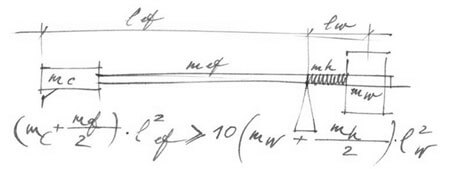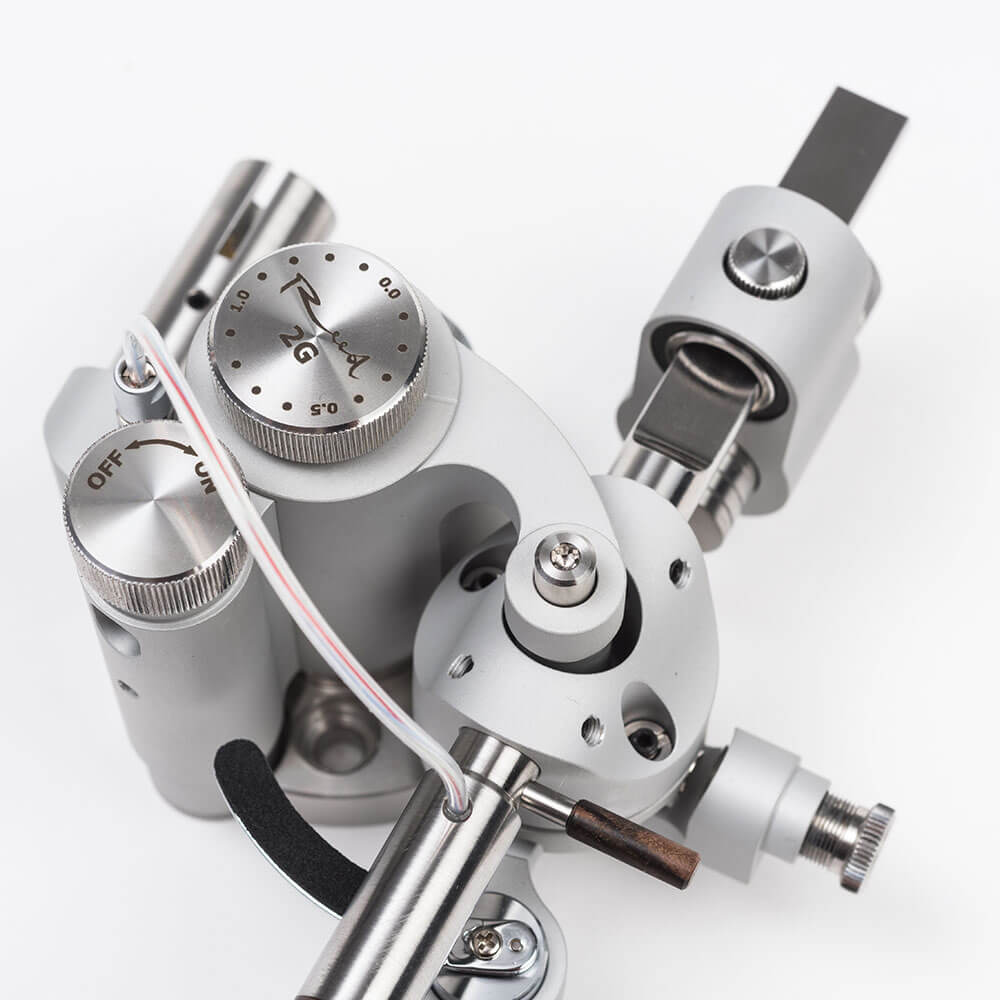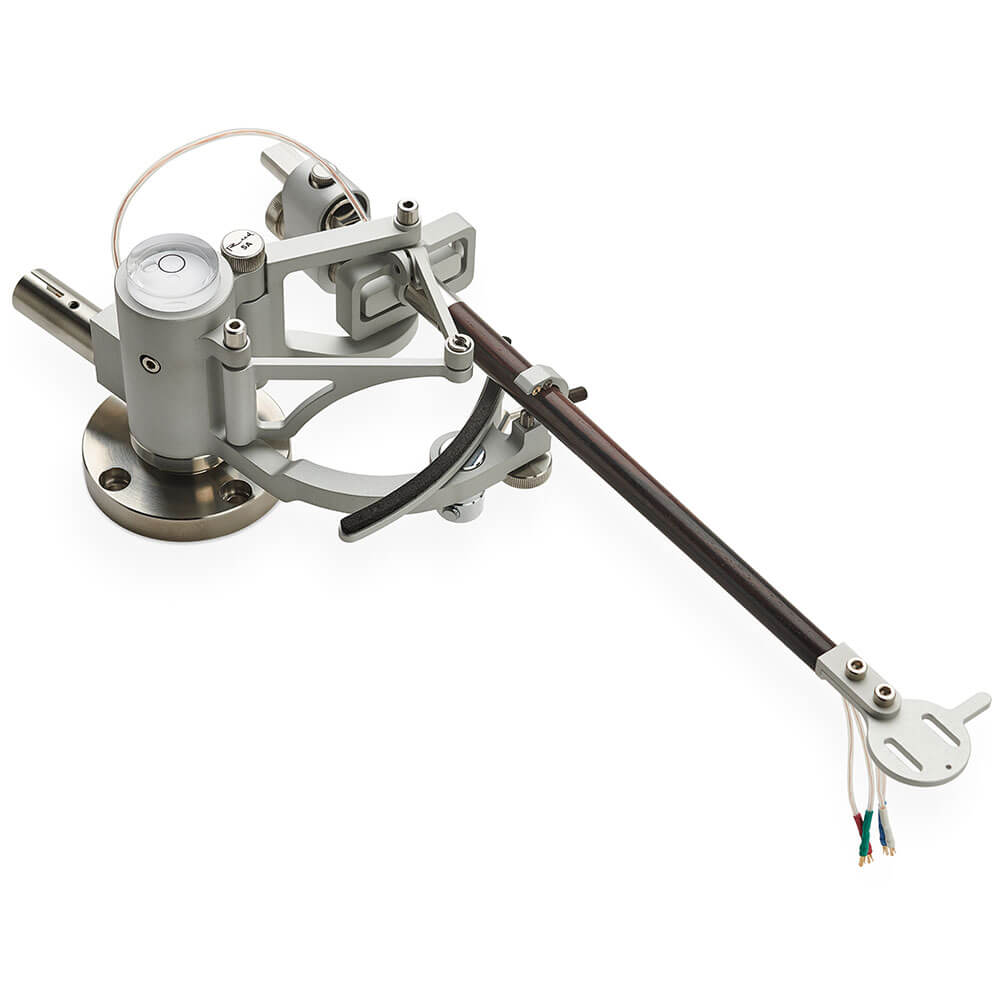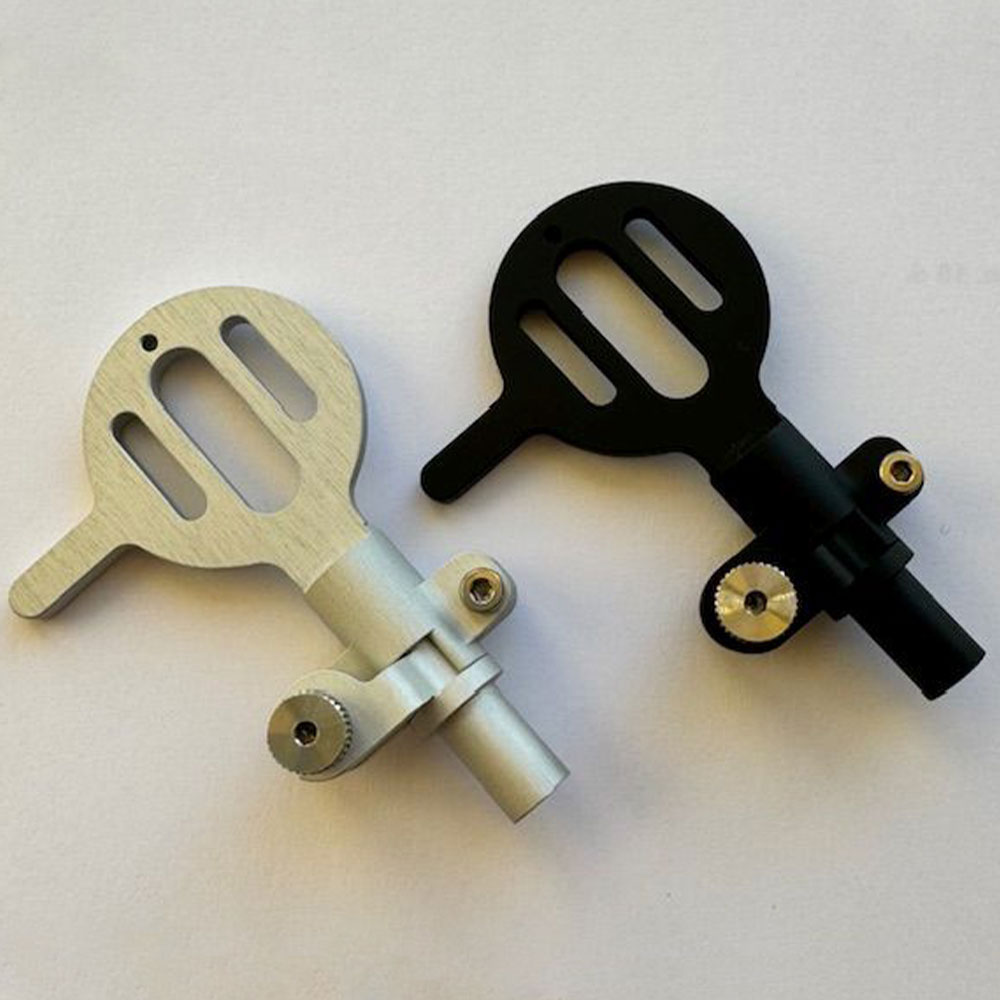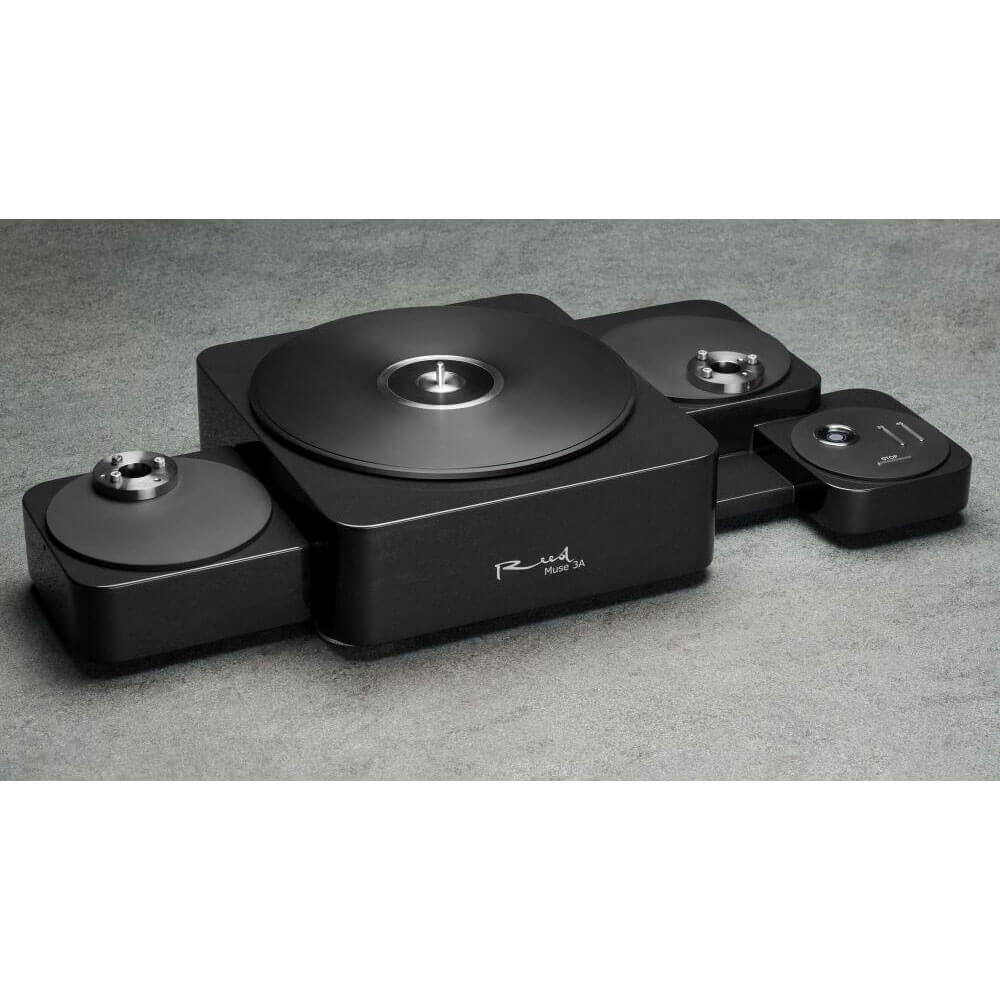
What do you get when a radio engineer who has three patented inventions in the field of acoustic behaviour of plasma in ballistic missiles turns his attention to analog audio design? You get some of the most exquisite tonearms and turntables the world has ever seen. Designer Vidmantas Triukas has been working in the high-end audio industry since 1985, using extensive research and solid scientific principles as the basis for his designs.
In 2007, after years of extensive research, the first Reed tonearm was introduced to the market and was immediately acclaimed for its innovation, build quality and sonics. Reed tonearms are also known for taking design principles that are successfully established and then taking their designs to the next level. For example, the 5T is a tangential tonearm that incorporates a limited rotation sectional torque motor and the tonearm’s position is controlled by laser and linear sensor array. This level of technology is simply unprecedented in tonearm design. His turntable designs follow the same philosophy and represent outstanding performance & value.
Vidmantas also possesses a passion for the arts which has infused his designs with an innate beauty both aesthetically and sonically. Loved by analog & music connoisseurs, Reed products are a portal to musical bliss.

Products
-
Reed 1H
Cardanic Bearing Type Carbon Fibre Tonearm
-
Reed 2G
Advanced Cardanic Bearing Type Tonearm
-
Reed 2B
High Performance Tonearm
-
Reed 3P
Gimbal ‘Uni-pivot’ Bearing Type Tonearm
-
Reed 5A
Tangential 90 Degree Pivot Reference Tonearm
-
Reed 5T
Tangential Statement Laser Guided Tonearm
-
Reed Precision Headshell
Precise Azimuth Adjuster for 5A & 5T
-
Reed Muse 1C
Reference Turntable
-
Reed Muse 3A
Reference Turntable
-
Reed Muse 3C
Statement Turntable
Design Principles
A tonearm is a mechanical, acoustical and electronic system. The set of parameters of this system determine the characteristics of the tonearm and how the tonearm will ‘sound’ depends on how many parameters were taken into account while designing it. The main parameters of a tonearm are (1) Effective length, (2) Effective mass, (3) Moment of inertia, (4) Acoustic damping of the armwand and (5) Wiring impedance.
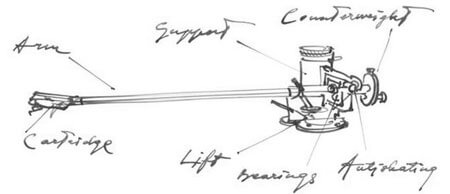
(1) Effective length
The effective length of a Reed tonearm can be from 9″ to 12″.
(2) Effective mass
The effective mass of a tonearm is very important when matching a cartridge. Cartridge compatibility with tonearm is determined by the Tonearm Resonant Frequency. It should be 10Hz (-4Hz + 6Hz) however it may vary from 8Hz to 12Hz. The Tonearm Resonant Frequency can be calculated by using following formula:

where:
ƒrez – resonant frequency of tonearm
mef – effective mass of tonearm
mc – weight of cartridge
ms – mass of the screws, nuts, spacers, washers, shims
c – compliance of the cartridge
Since the effective mass of different Reed models can be from 8g to 25g, Reed tonearm can be matched with almost any cartridge.
(3) Moment of inertia
The tonearm moment of inertia consists of two parts:
a) Cartridge moment of inertia Ic
b) Counterweight moment of inertia Iw

Because Iw should be (and usually is) at least 10 times less than Ic , we will use it only for approximate calculation.
The cartridge moment of inertia Ic is calculated using the following formula:

mc – cartridge weight
mef – tonearm effective mass
lef – tonearm effective length
Best result is achieved when Ic is less than 20000 g*cm2.
If the LP is perfectly flat, then Ic does not have any influence. Ic becomes important when LP is not flat. In such cases the cartridge and tonearm are moving up and down while the record is playing. Even if the swinging amplitude is around +/- 0.5 mm, the tonearm with a high Ic may not be able to catch up with the LP swing. This causes instant VTF, VTA and SRA changes which lead to sound distortions. To reduce LP swinging, clamps are used.
(4) Acoustic damping of armwand
The stylus, while moving in the vinyl’s groove, produces not just the musical signal, but also oscillates the cartridge. This oscillation can be transferred through the armwand, be partially reflected from the counterweight, travel through the tonearm bearings, tonearm support, chassis, platter bearings, platter, mat and the vinyl record and return back to the stylus. The stylus also causes vinyl plate vibrations that travel through the mat, platter, platter bearings, chassis, tonearm support, tonearm bearings, armwand and return to the stylus again.
The interference of these two acoustic vibrations can impact the sound quality. To deal with these vibrations, acoustic oscillation damping can be done in two ways:
a) Vibrations transferring to the floor.
This is the most widespread method. The most common solution is to build a tonearm that should carry away these vibrations as quickly as possible and via a mechanical connection, transfer them to the floor. Designers sometimes increase the weight of a platter so that it can suppress vibrations and at the same incorporate soft suspension systems in order to allow less vibration energy to get back to the stylus. This can be done quite easily in heavy decks but this is not fully effective as measurements show that some vibration finds its way back to stylus eventually. The amplitude is not too big but considering the size of the groove this vibration may still introduce some distortion.
b) Choosing right armwand material
Reed tonearm armwands are made of carefully selected different types of wood, so their sound damping characteristics cover the whole range (exponential). This method was chosen after a lot of testing of different armtube materials and bearing setups.

(5) Wiring impedance
It is very important to harmonise cartridge output impedance, wiring impedance and preamplifier input impedance. The cable used in Reed tonearms is made by Stereo-Lux Musikanlagen, has no soldering points and is harmonised perfectly.
After a lot of tests and listening to customer feedback we found out that tonearm adjustment is important not just for installing the tonearm for the first time but also after changing a cartridge or even a LP. That’s why Reed tonearms feature user-friendly and precise adjustment for azimuth and VTA.
